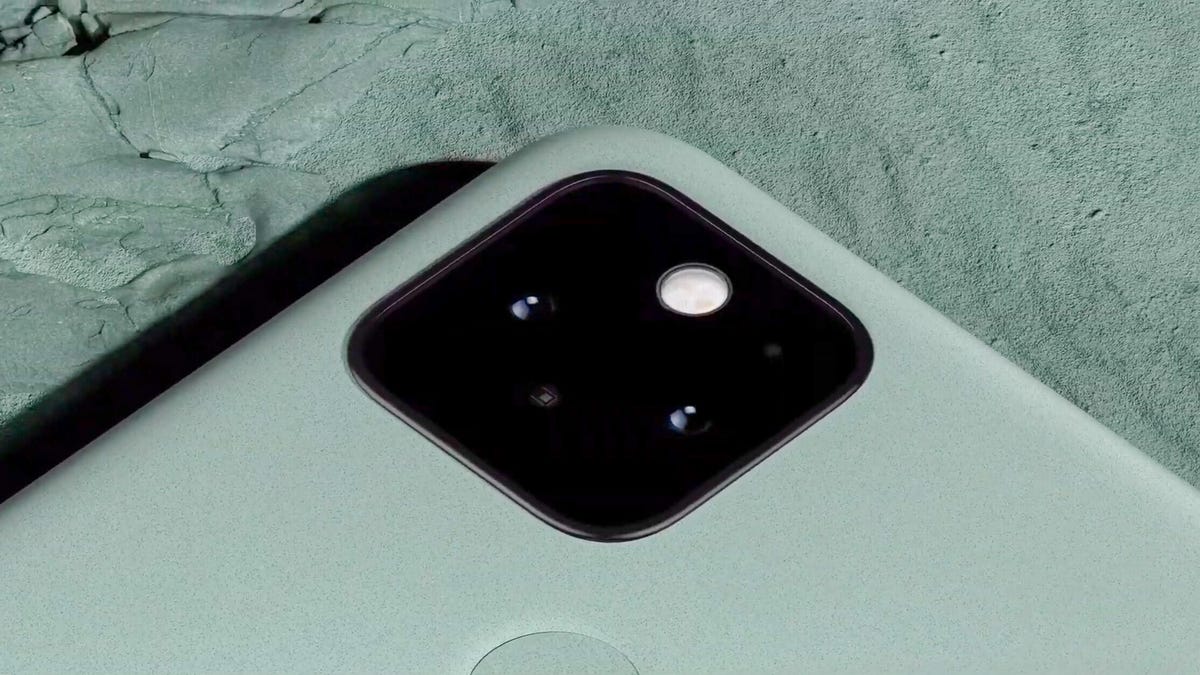 Why You Can Trust CNET
Why You Can Trust CNET 2 Google Pixel 5 camera features we think you'll be excited about
The telephoto camera is gone as Google follows Apple's iPhone design and adds an ultrawide-angle camera. Google also marries portrait mode with Night Sight in the Pixel 5 flagship.

Google's Pixel 5 includes regular and ultrawide-angle cameras.
Google's Pixel 5 flagship smartphone was unveiled earlier this week at its virtual "Launch Night In" event, which also introduced the Pixel 4A 5G, a new Chromecast and Nest Audio, a new smart speaker that will replace the Google Home. Among the new flagship phone's specs and features announced at the event are some pretty big changes to its camera setup: The first is a new ultrawide-angle camera, good for photographing groups of people and indoor scenes. Google dropped the telephoto camera that its predecessor offered for capturing distant subjects, a move Apple also made last year in its iPhone 11.
The second camera feature Google unveiled at its Pixel 5 event is the marriage of Night Sight with its portrait mode, for blurring the background details in photos taken in low-light environments. Google led the way for low-light and nighttime photography with its Night Sight feature, so this development is a logical next step for the company. "It allows subjects to stand out even in low light," said Pixel product manager Soniya Jobanputra.
An ultrawide camera also is useful for video, which often crops the outer portions of the frame to help stabilize footage. The ultrawide camera complements a traditional main 12-megapixel camera on the Pixel 5's back and a front-facing 8-megapixel selfie camera on the front. The Pixel 5 starts at $700, but the same camera hardware is also used on the new Pixel 4A 5G.
"The ultrawide lens ensures you get it all," Jobanputra said.
See also
The cameras on Google's Pixel phones carry outsized importance. Although Google's phones haven't dented the smartphone dominance of Samsung and Apple, they have raised expectations for what's possible for tiny phone cameras. In particular, Google pioneered computational photography techniques that use software and other processing methods to squeeze better image quality out of tiny phone cameras.
Computational photography competition
Apple has caught up, though, in part by adopting a core Google computational photography method called HDR+, which combines several underexposed shots into one single frame. The approach helps capture shadow detail while preventing bright blue skies from being overexposed into whitewashed blandness. And Google has lost a key researcher to Adobe, Marc Levoy, who coined the term computational photography.
Now Google has a new version of HDR+. This time, instead of just the underexposed frames, it also includes brighter frames. That's a more traditional approach called exposure bracketing, and Google says it'll make photos more vivid.
Also new for video clips is a feature called cinematic video that smooths horizontal panning.
Last, Google now not only brightens faces in portraits, but also lets you tweak the direction of this apparent illumination in its Google Photos software -- including for older portrait photos you've already taken.
Goodbye, telephoto camera
Losing the telephoto lens might disappoint those who want to capture more distant subjects like mountains or who like the foreshortening effect that telephoto lenses have on portraits.
But there are some compensations. First, Google offers a technology called Super-Res Zoom that offers improvements over conventional digital zooming. Second, the spacious perspective of ultrawide cameras can be useful for landscape photography.
Apple has taken a different approach. Its iPhone Pro models include both ultrawide and telephoto cameras alongside the main one. And rival Android phones like Samsung's Galaxy S20 Ultra offer even more powerful optical zoom hardware.
The main camera in the Pixel 5 and 4G 5G phones has the same f1.7 aperture lens and 1.4-micron pixel size as the Pixel 4. The ultrawide camera has an f2.2 aperture and smaller 1-micron pixels. It's got a 16-megapixel sensor, though it's not clear yet whether final photos will use all 16 million of those pixels.
For video, the new Pixel phones will shoot 1080p video at up to 240 frames per second and 4K video up to 60fps.

